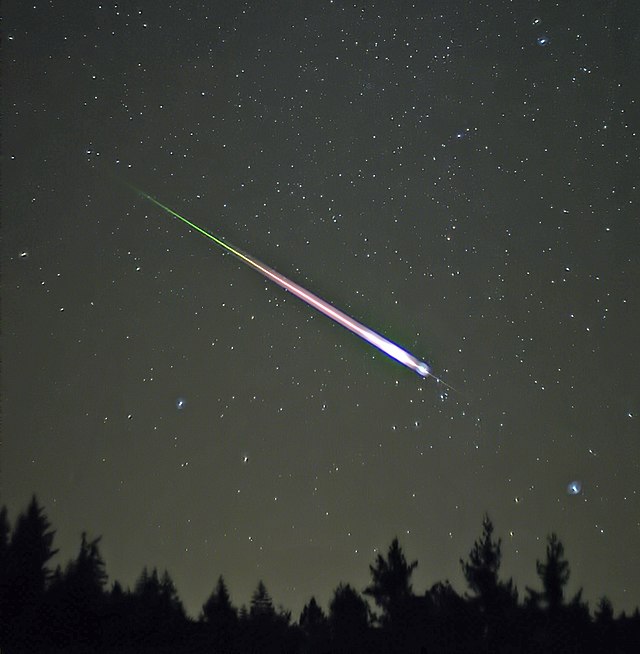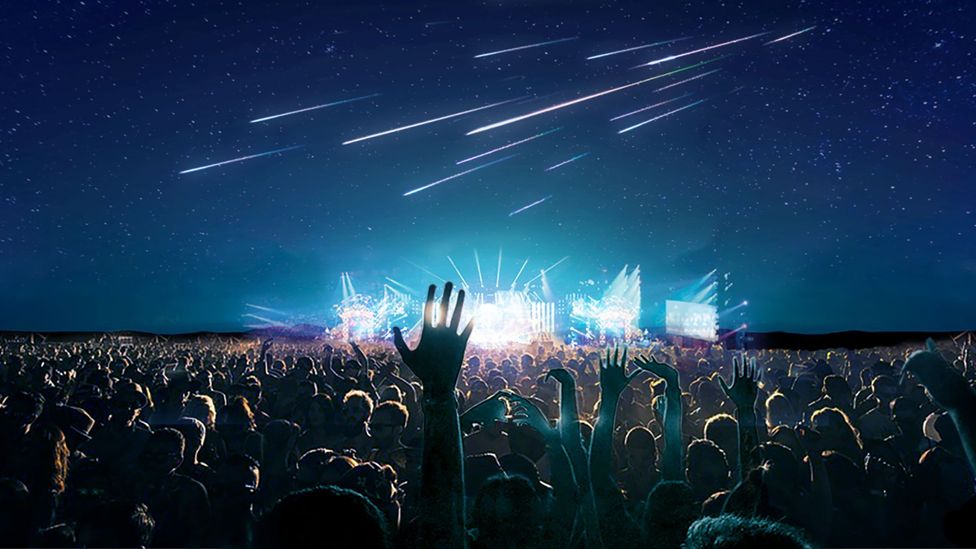They say make a wish when you see a shooting star, and it shall be granted. The truth is, those shooting stars are chunks of larger space rocks that burn up upon entry into the Earth’s atmosphere. Scientifically, they are known as meteors. Their parent bodies could be meteoroids (rocks), which are smaller fragments of asteroids, or comets (icy bodies mixed with some rocks and dust). When meteors do not completely burn, they survive and make their way to land on Earth and are called meteorites. It is then that scientists collect them for analysis purposes since they are the oldest record of the formation of our solar system.

It is also worthwhile to mention that these beautiful bodies can have a moon or other planetary origins, and most of them are found in the asteroid belt located between Mars and Jupiter.
While it is true that meteors appear randomly, there are dates when they appear more often during what is known as a ‘meteor shower’. Depending on the month, meteors vary in their presence; during December the Geminids meteor shower results in about 150 meteors per hour, while in April, the Lyrids meteor shower, results in 18 meteors per hour.[1] If you have not seen meteors yet, mark your calendars, head to a place with no light pollution, and observe the beautiful drama of the sky.
What if we wanted those meteors to appear at a certain time? And in a specific place? Well, meteors are not in our control, but fireworks are! However, fireworks require much more human effort than meteors. In fact, meteors do not need human intervention at all, let alone them being free of cost, unlike fireworks. Also, while meteors could be dangerous if they were big in size, fireworks could be much more harmful in that they can cause injuries and property damage. Furthermore, fireworks also harm the environment by causing extensive air pollution. In terms of similarities, both meteors and fireworks can appear in various colors. Meteors with high calcium content may appear as a purple streak of light, while fireworks having barium chloride gives a luminescent green color.
The question is, when and why were fireworks made in the first place? Historians believe that fireworks originally developed in the second century B.C. in ancient Liuyang, China. The first natural "firecrackers" were bamboo stalks that when thrown in a fire, would explode with a bang, warding off evil spirits. Then, during the period 600-900 AD, a Chinese alchemist is said to have mixed potassium nitrate, sulfur and charcoal to produce a black, flaky powder – the first “gunpowder”. This powder was poured into hallowed out bamboo sticks, and later stiff paper tubes, forming the first man made fireworks. This invention made its way to Europe and was widely used for religious festivals and public entertainment.
Today, fireworks are used worldwide to celebrate special ceremonies. Clearly, the invention of fireworks developed through the centuries and required experience to produce them. All kinds of fireworks require the mixing of black powder with different chemicals or metals. When it reacts with heat, the chosen additive produces a certain colour. Do you think wind can bring these metals and chemicals together and produce fireworks? Will it light the fuse? Will it take into consideration the safety of the people in the surrounding area? How about a child mixing those chemicals and lighting a fuse? This would likely result in severe injury to the child should the mixture “randomly” work. Therefore, it is obvious that there must be a maker behind fireworks, and someone who lights the fuse.
Similarly, meteors could not have been made by accident or by nature. The elements they consist of did not randomly appear nor did they create themselves. How can nature produce a silicon element with a different atomic structure and number than a nickel for example? How can it decide whether to make a gas or a metal? Looking at the home of meteors- the asteroid belt, on what basis did nature decide to place them there? Are we merely “lucky” that most meteors land either in the sea or in an uninhabited desert? Do meteors have a sense of consciousness to make them care for people and keep them from harm? Is a meteor aware of the elements it is made of? Of course not. There must be a Creator of meteors, a Creator who created elements that eventually manifested as planets, asteroids, and everything else. Nature, chance, and cause do not have the will, knowledge or power to make meteors. They cannot even direct a meteor and tell it where to go. Indeed, there must be wisdom behind the existence of meteors and their designated location. It is through fallen meteors that scientists were able to understand how our solar system formed including our planet Earth and all other planets. It is through observing meteors that scientists understood the phenomenon of meteor showers. Meteors are but one sign among many others that point out the secrets of the universe and its Creator.
For us to observe meteors, we need to have eyes. For meteors to be observed by our eyes, there must be an atmosphere where entering meteoroids could burn and appear as meteors. For that to happen, there need to be meteoroids roaming around in the solar system that were a result of asteroids smashing into each other. On a micro level, each of these bodies needs to be made of some elements like oxygen, silicon, magnesium and iron- with certain ratios- for them to be classified as space rocks. Each meteorite, when found by scientists and amateurs, needs to be treated delicately and analyzed using various techniques to determine its age- thereby determining the age of the solar system. Indeed, the macro and micro levels are profoundly intertwined and are connected to the universe at large.
Therefore, we understand that the Maker of meteors must be the Maker of the entire universe along with its building blocks such as the elements found within them. He must be the All-Powerful who creates and controls the paths of these meteors. He must be the Most Merciful who blessed us with an atmosphere that protects us from meteors. He must be the All-Knowing who inspired humans to inspect and investigate meteorites to understand His signs in the universe. He must be the Most Beautiful who embellished the sky with beautiful stars and dazzling meteors. Meteors tell us about His name The Manifest when they appear in the sky, and His name The Hidden when analyzed.

Although they are often small in size, meteorites are of great value. They each differ in their appearance and components, reminding us that we are beautifully different from each other. Were it not for meteors, the formation of the planets would have still been a mystery. In ancient times, the appearance of a meteor was documented, and it was only after compiling their writings that scientists were able to classify meteor showers and know beforehand their timings.
This teaches us that as humans we need a lot of time and experience to comprehend a phenomenon. It also teaches us that all ancient civilizations took part in shaping the science of meteors as we know it today. Similarly, we must continue our collective efforts in science for the benefit of humanity yet be mindful of the Only Maker of every single part of this universe. Moreover, the sudden appearance of meteors, especially the ones not belonging to a certain meteor shower, remind us of our impotence and lead us to realize that He is the Only All-Powerful, All-Knowing One. Indeed, to appreciate meteors we should realize the Maker of these beautiful bodies whenever we observe them, we should reflect on how such small space rocks hold the key to understanding the solar system, and we should be grateful to the Most Bountiful for giving us such precious extraterrestrial rocks.